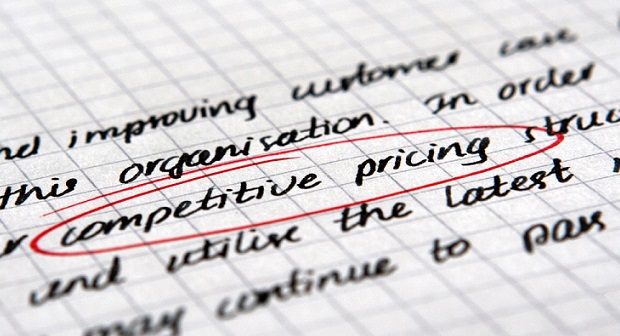Pricing strategy is undoubtedly the Cinderella of the marketing toolkit. Whilst managers get excited about developing new products or services, and everyone in the company has a view about promotions and new advertising, no-one but your accountant will get out of bed to talk about pricing.
Yet it is an integral part of how your brand, products and services are perceived by customers. We judge a product by its price tag without conscious thought, as though it’s been hard wired into our brains at birth. Take the example of supermarket own label products, where a 3-product approach introduced initially by Tesco has been much imitated by the rest. A Tesco Finest biscuit is the one you’d put in front of your mother in law for Sunday tea, the everyday one is OK for weekday consumption but for feeding hungry hordes of kids after school we’re quite happy to reach for the Value packet. The look, feel and taste of the product matches our expectations because the price tells us everything we need to know about the quality.
As many businesses are being hit by the weakness of the pound, it’s tempting to ask customers to pay more for the same, or even, as in the example of Toblerone and many other of our favourite chocolate brands, pay more for a smaller size product. Because pricing has strategic implications for our business, we need to give this some thought and proceed with care when changing prices.
So, what are the options? Firstly, there isn’t always a direct correlation between price and cost. In the luxury world of designer fashion, the price of producing the goods bears no resemblance to the price ticket. In fact, what makes luxury brands so desirable is the scarcity of supply and their exclusive nature. Secondly, at the other end of the scale, you can opt out of considering price at all and use a simple cost plus margin formula which used to the staple model for a sensible business plan. You can tweak this slightly by looking at critical price points for specific routes to market, for example, suppliers to Poundland produce different sizes to those sold through other retailers.
If you’re not in either of those camps, you need to look at what your competition is doing because price and perceived value are so closely linked in the mind of the customer. If a customer cannot perceive any difference between your product and a competitor they will revert to buying solely on price. Your product is a commodity in their eyes. Sadly, this often leads to repeated discounting and sometimes and a ’race to the bottom’ between companies desperate to keep their market share. No one wins. So discounting should be a last resort and used sparingly. Instead, spend some time thinking about your competitive advantage(s) in your market. Focus on offering better value for customers and differentiating your products and services. Customers will pay more if they believe the difference is worth it, so concentrate on what really makes you different. Do your reality checks by asking your customers and prospective customers what they think. Are there ways you can add value for a customer that don’t incur additional cost for your business? Are there ways that you can cut costs that wouldn’t have an impact on the customer because these features are not valued. Are there more efficient ways to deliver your products or quicker and easier ways to purchase? Is it good after sales care that matters or a longer guarantee?
Whatever you decide, changing your pricing should be infrequent if you wish to maintain the image and prestige of your brand name. Brands and companies that are consistent and transparent in their marketing strategies are trusted. Those that chop and change quickly lose that trust. It could be worthwhile in the long run taking a small hit to your margins when your costs go up if your competition are constantly changing their approach and thus confusing their customers. Dare I mention that if you’re going to market your brand as ‘strong and stable’, changing your approach will damage your reputation, perhaps irretrievably.
If you’d like a helping hand to get your prices right, contact us on 01905 885 285
Gill
